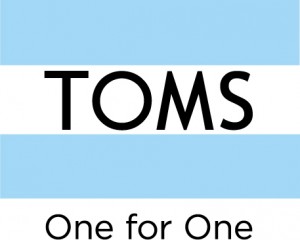During the first week or so of this class, we watched a great video about TOMS Shoes, highlighting the essentials of their buy one, give one campaign. Interestingly, I read an article last term as part of the required readings for SOCI 430B: Perspectives on Global Citizenship, which questioned the sustainability and effectiveness of this particular campaign.
http://whereamiwearing.com/2011/04/toms-shoes/
Essentially, the article, written by Kelsey Zimmerman, makes note that the charity element of the campaign, in which a pair of shoes is given to someone in need in a third world country, doesn’t necessarily alleviate the heart of the matter: poverty. Is the act of giving a pair of shoes to an impoverished person going to fix poverty? Probably not. What’s the alternative then? Well, instead of giving a pair of shoes away, TOMS should invest in employing workers in these third world nations, that way, workers can make a decent wage, and improve their quality of life. Interesting. This actually makes sense. However, part of me doesn’t want to believe him, because I’ve grown to appreciate the mission of the TOMS brand. TOMS must employ local workers in these countries right? Well they do, in China, which wasn’t at the top of my list of countries in need of an economic boost.
Kelsey mentions another footwear business, SoleRebels, which is based in Ethiopia, employs locals, and pays 300% more than similar employers in the country. All of the materials used to make the footwear is sourced locally (within a 60 mile radius of the city).
Ultimately, Kelsey doesn’t just say “TOMS is bad.” He actually commends them for doing things that no other for-profit business would ever think of doing. Instead, he makes suggestions as to what could be improved in the business model, and encourages consumers to seek more information about their purchases. I totally agree with the latter. If we, as consumers, are going to pride ourselves in making sustainable choices, and mindfully purchase products that have a story, we need to take the necessary steps to ensure that we know the nitty gritty details of the story we are telling.


